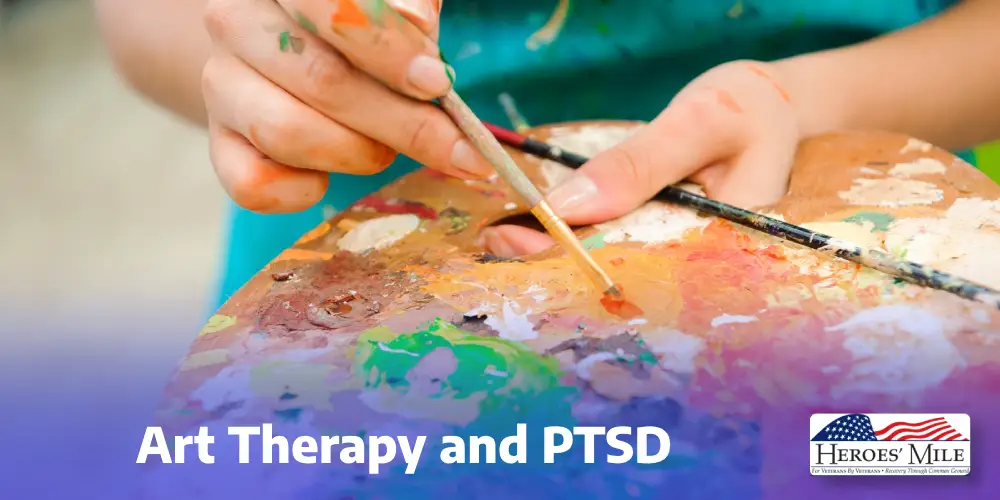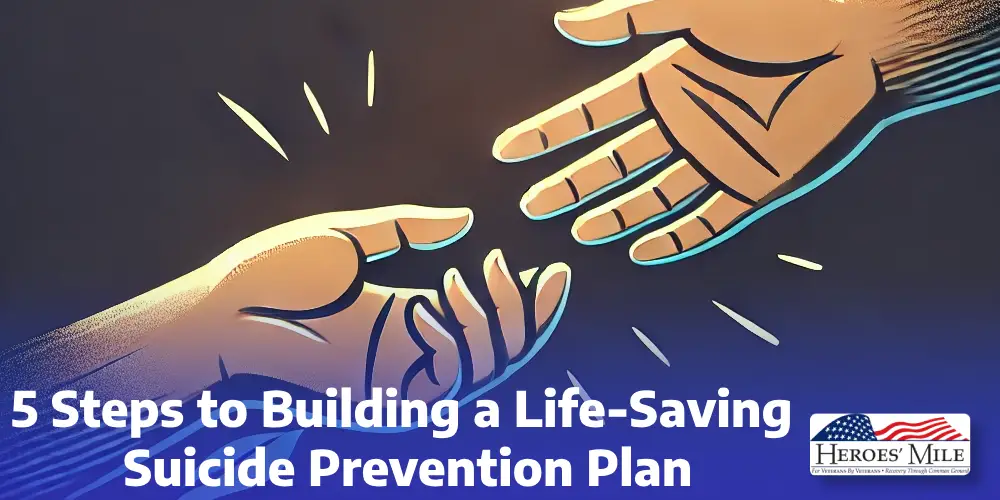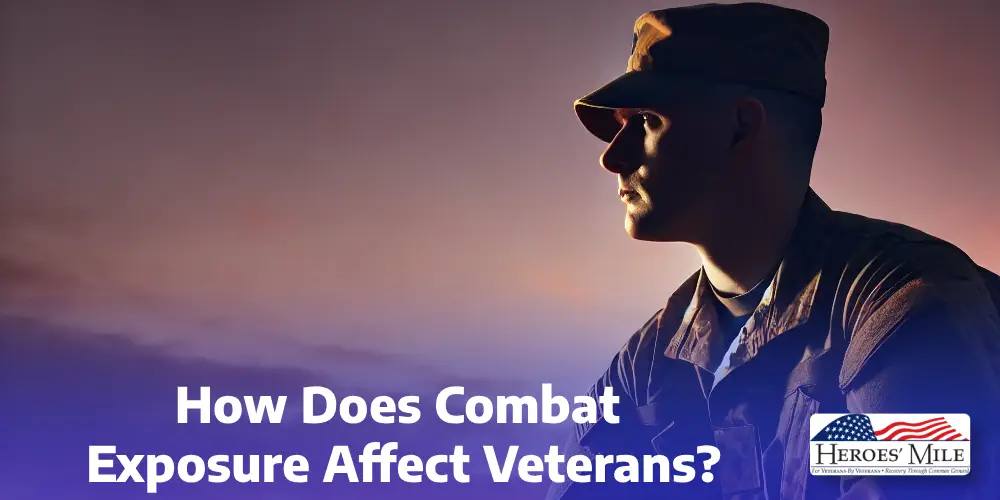Avoidance coping is a common survival technique for individuals who have endured psychological stress. You may shut off in response to unpleasant thoughts and feelings. Maybe you avoid places that remind you of your time deployed. While these acts of self-preservation may help you get through the day, they can be a sign of an underlying mental health issue. Keep reading to learn more about avoidance coping and alternatives to help you heal from your invisible wounds.
What Is Avoidance Coping?
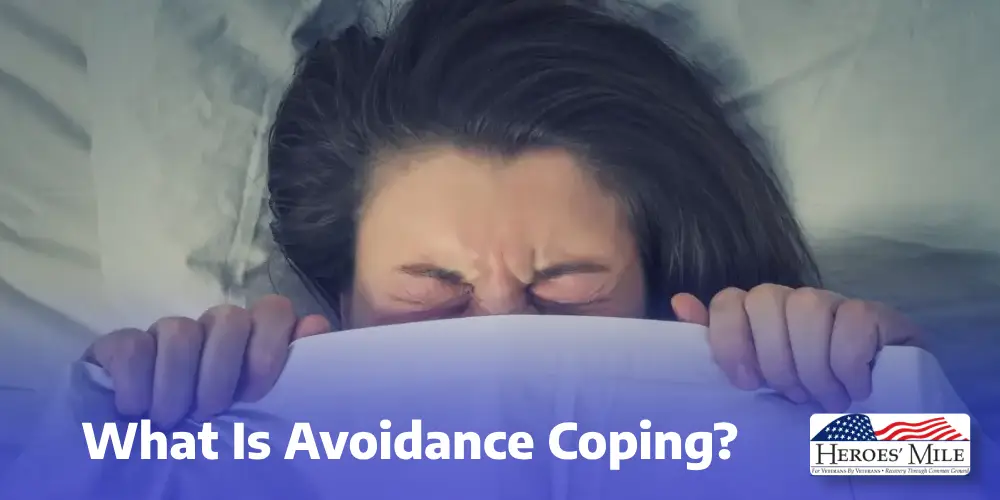
What Is Avoidance Coping?
Avoidance coping refers to strategies used to disengage from stressful situations instead of addressing them head-on. In other words, behaviors that are used for avoiding stress by ignoring a difficult situation or unwanted feelings. This is considered a maladaptive form of coping because it increases feelings of stress and anxiety in the long run, despite causing you to feel better in the moment.
Avoidance behaviors can take on many forms but they all involve changing your behavior to avoid thinking about, feeling, or doing difficult things. These behaviors are viewed as unhealthy avoidance coping methods because they don’t address the root causes of stress. Additionally, overusing such behaviors can lead to a variety of unwanted consequences including lower self-esteem and poor mental and physical health.
Signs of Avoidance Behavior
There are many reasons why you may find it easier to cope with stressors through avoidance. Individuals struggling with PTSD or anxiety are more prone to rely on avoidance coping to manage difficult symptoms. For instance, symptoms of a anxiety attack can make it difficult to stay in the present moment. Therefore you scroll on your phone until the unpleasant thoughts and bodily sensations subside. Maybe you learned avoidance techniques early in life if you were a child of a dysfunctional family. You may have used only passive coping strategies to avoid conflict or rejection. Now, these behaviors are magnified as you attempt to cope with service-related trauma as an adult.
No matter the case, if you engage in avoidance behavior you may:
- Avoid taking actions that trigger painful memories
- Avoid anxiety-provoking thoughts or places
- Distance yourself from unpleasant feelings
- Withdraw from loved ones and social settings
- Avoid conflict, even when it’s necessary
If you often engage in these behaviors, it may be worth it to investigate the underlying cause. At Heroes’ Mile, you can improve your mental health in a safe and judgment-free environment surrounded by other Individuals.
Avoidance Coping Examples
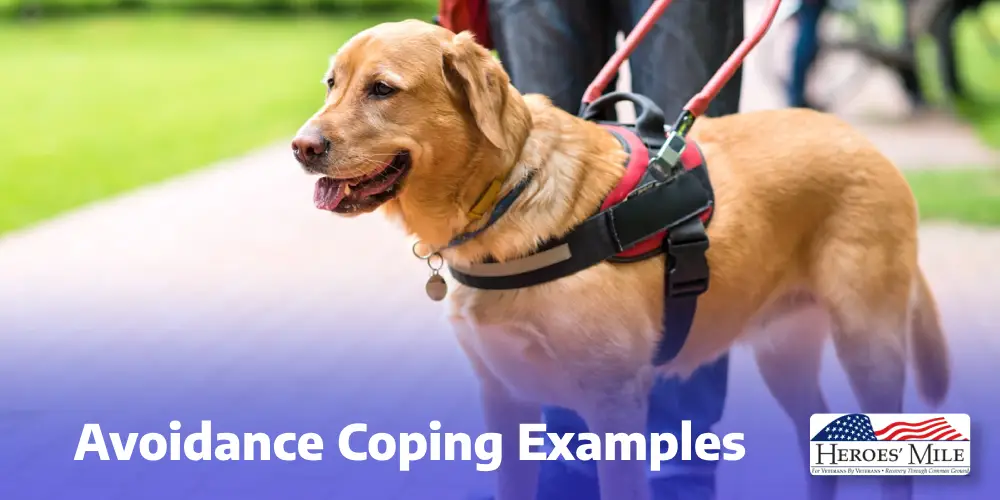
Avoidance Coping Examples
Emotional avoidance allows individuals to avoid thoughts and feelings of traumatic events without the people around them knowing. This is a common response for Individuals struggling with the symptoms of PTSD. Attempting to shut off internally can help you temporarily manage stress. However, it’s not a long-term solution because the unprocessed information will continue to resurface.
Many of the behaviors that involve avoidance help individuals distance themselves from reminders of the trauma. For instance, a Individuals that experienced a natural disaster may turn to alcohol or other substances to avoid memories or thoughts of the disaster. On the other hand, some stress may avoid places, sounds, and smells that remind them of the time they spent somewhere. By avoiding these triggers with avoidant behaviors or substance abuse, they temporarily protect themselves from trauma, but do not address the underlying issue.
There are a variety of behaviors that may be ingrained in your daily routine to enforce self-preservation. Some of the most common avoidance behaviors include:
- Escapism
- Daydreaming
- Self-isolation
- Leaving social events early
- Canceling plans last minute
- Avoiding places
- Ignoring calls and texts
- Binge-eating
- Substance abuse
- Procrastination
Different Types of Coping
There are two broad categories when it comes to the different types of coping: passive/avoidance coping and active/approach coping. As mentioned, avoidance coping involves behaviors that prevent individuals from addressing stressful problems or situations. Whereas active behavioral coping addresses the problem directly so you can take the steps to solve it.
Active coping helps you overcome your knee-jerk avoidance response by reacting to the stress rather than ignoring it. Although there are different approaches to active coping, they all center on tackling the issue so that you’re able to move past it and minimize long-term stress. This is accomplished by fostering an awareness of your stressor followed by actions taken to reduce the effect of the stress.
However, learning to use active coping mechanisms can require some help from a mental health professional. Individuals struggling with PTSD can benefit from trauma-based therapy techniques in addition to support groups. This emotional and peer-to-peer support can help you recognize these behaviors and learn what you can do instead to improve your overall mental wellness.
Trauma-informed therapy methods that can help you manage symptoms of PTSD and anxiety include:
- Cognitive behavioral therapy
- Eye movement desensitization and reprocessing therapy
- Traumatic incident reduction therapy
- Equine therapy
Can Avoidance Coping be Helpful?
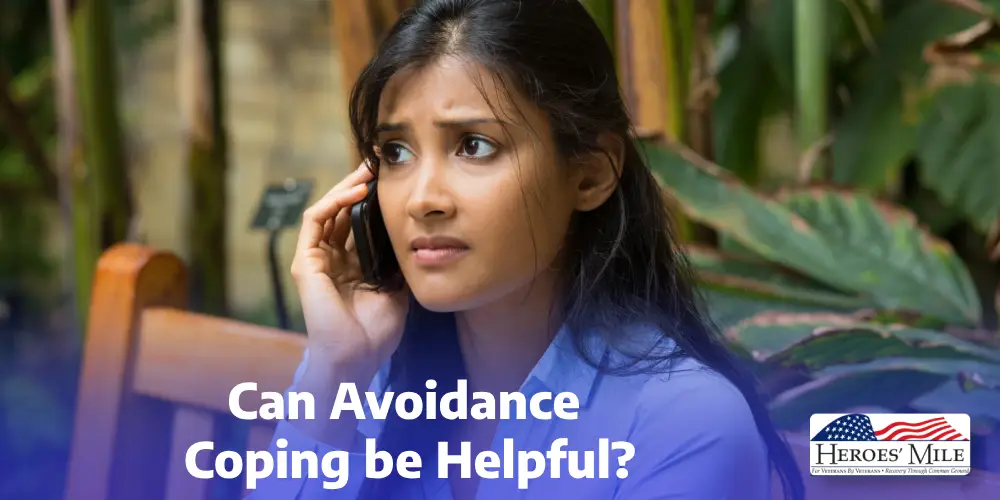
Can Avoidance Coping be Helpful?
Avoidance coping strategies involve turning your attention away from having to process information the body deems threatening. This can be helpful during traumatic events such as combat and sexual assault. Your mind and body may temporarily shut down to help you get through the situation until the threat has gone. However, these traumatic experiences will not go away if you simply avoid processing the trauma. Avoidance coping will only put off unpleasant thoughts and feelings until you encounter another trigger, often leading to more severe symptoms in the future.
But there are some forms of passive coping that are considered healthy. For example, stress relief practices such as exercising or meditating can help you minimize stress before directly addressing the stressor. While these coping mechanisms don’t affect the situation, they can empower you to approach it in a better state of mind. Sometimes intentionally separating yourself from a stressful situation to gather your thoughts and feelings can help you to respond more proactively.
You may want to feel good in the moment, but avoidance won’t help you learn to tolerate uncomfortable feelings. The only way to take the next step and process your trauma is to work through the uncomfortable thoughts and feelings. You can safely do this with the guidance of a mental health professional at your own pace as part of your mental health recovery journey. They will help you find effective active coping mechanisms that help you manage your mental health in the long run.
Video
Circumventing Emotional Avoidance, Michelle Maidenberg – TED Talk
Avoiding uncomfortable emotions is a human phenomenon—it prevents us from acting from our values, reaching our goals, and living the life we want. Anxiety expert Michelle Maidenberg unpacks what causes emotional avoidance and shows us what we need to do in order to effectively overcome it to facilitate conscious awareness for overall well-being.
News Audio
Stressed out? These 8 skills can help boost mood and reduce anxiety – NPR
Is your to-do list overwhelming? Do the demands of family or work stress you out? Or maybe it’s politics, climate change, or global conflict that are making you feel anxious. It’s impossible to eliminate all of your stress, but science shows you can learn to manage it better.
FAQ
- What is avoidance coping, and how does it affect mental health?
Avoidance coping refers to strategies where individuals ignore, deny, or distract themselves from stressful situations instead of addressing them. While it may provide short-term relief, it can lead to increased anxiety, depression, and worsening mental health issues over time. - Why do people engage in avoidance coping?
Many individuals use avoidance coping as a defense mechanism to manage overwhelming emotions, past trauma, or fear of failure. It can also stem from learned behaviors, lack of coping skills, or an underlying mental health condition such as anxiety or PTSD. - What are the risks of relying on avoidance coping?
Relying on avoidance coping can prevent emotional growth, strain relationships, and increase stress in the long run. It may also lead to unhealthy behaviors such as substance abuse, social withdrawal, or procrastination. - How can someone shift from avoidance coping to healthier coping strategies?
Developing self-awareness, practicing mindfulness, seeking professional therapy, and using problem-solving techniques can help replace avoidance coping with healthier habits. Cognitive Behavioral Therapy (CBT) is particularly effective in addressing avoidance behaviors. - When should someone seek professional help for avoidance coping?
If avoidance coping interferes with daily life, relationships, or mental well-being, it may be time to seek professional help. A behavioral hospital can provide therapy, support groups, and coping strategies to help individuals address their challenges in a healthier way.

